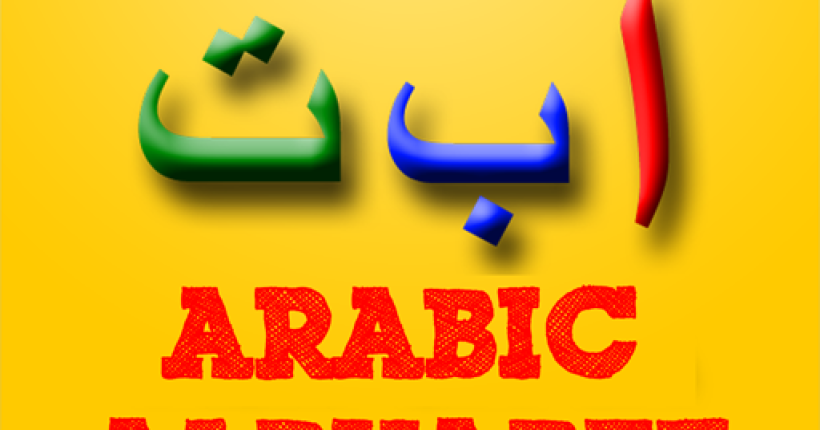Learning Arabic can be intimidating, especially when dealing with pronunciation. As a non-native speaker, it is essential to decode vowels and harakat for reading, speaking, and reciting correctly. This Arabic vowels and harakat pronunciation guide will take you through decoding the system, avoid common mistakes, and practice effectively.
What Are Arabic Vowels and Harakat?
Harakat are the small marks that tell you how to pronounce each consonant in a word. Harakat are the small signs that tell you how to pronounce each consonant in a word.
Arabic possesses its own unique script that makes very extensive use of harakat (diacritical marks) to guide pronunciation. Unlike English, Arabic vowels are not necessarily always represented in the form of letters. Short vowels appear by small marks on top of or below consonants, whereas long vowels are represented as full letters.
Vowels provide sound and rhythm to words. Without them, Arabic would be difficult to read for beginners.
Types of Arabic Vowels and Harakat
For ease of understanding in this Arabic vowels and harakat pronunciation guide, let’s categorize them:
1. Short Vowels (Harakat)
Fatha ( َ ) → short “a” sound (as in “cat”).
Kasra ( ِ ) → short “i” sound (like in the word “sit”).
Damma ( ُ ) → short “u” sound (like in the word “put”).
2. Long Vowels
Alif ( ا ) → long “aa” sound.
Ya ( ي ) → long “ee” sound.
Waw ( و ) → long “oo” sound.
3. Sukun ( ْ )
Indicates that the consonant isn’t present (or isn’t followed by a vowel). Example: “ibn” (son).
4. Shadda ( ّ )
Duplicates a consonant sound. For example, “Allah” has a Shadda over the “l”.
When you combine them all, you get the rhythm and melody of Arabic words.
Common Pronunciation Challenges for Non-Arabs
Non-Arab learners generally struggle to pronounce because of differences in the mother language. These are the most common challenges:
Confusing short vowels for long vowels, altering word meaning.
Ignoring Shadda, leading to mispronunciation.
skipping Sukun, which affect word flow.
Placing the mother tongue’s accent over Arabic sounds.
For instance, pronouncing kitaab (book) with a short “a” instead of an “aa” gives it a totally different meaning.
Arabic Vowels and Harakat Pronunciation Guide: Step-by-Step
Here’s the way to approach Arabic vowels and harakat step by step:
Begin with short vowels: repeat Fatha, Kasra, and Damma repeatedly until they sound natural.
Transition to long vowels: pair them with their short vowel sounds to feel the difference.
Practice Sukun and Shadda: observe pauses and double letters.
Practice using Quran examples: even when not studying for religious reasons, Quranic text is vowelized and ideal to practice.
Listen and repeat: mimic native speakers until your tongue becomes used to it.
Split word: read syllable by syllable instead of rushing.
Record yourself: compare pronunciation to native audio to find errors.
7-Day Daily Practice Schedule for Arabic Vowels and Harakat
Here is a full Arabic vowels and harakat pronunciation guide to help you practice using them daily:
Day 1: Practice the Short Vowels
Practice Fatha, Kasra, and Damma only.
Read and practice 10 words with each vowel (e.g., kataba, kitaab, kutub).
Record your voice and compare to a native pronunciation.
Day 2: Practice the Long Vowels
Practice Alif (aa), Ya (ee), Waw (oo).
Practice pairs such as:
mal vs maal
bin vs been
nur vs noor
Do a “long vs short” drill: say the short vowel quickly, then extend the long vowel.
Day 3: Master Sukun (ْ)
Practice stopping when finding a consonant with Sukun.
Read simple words like: ibn, yaktub, qul.
Try short sentences with Sukun to reach fluency.
Day 4: Master Shadda (ّ)
Practice doubling consonants.
Start with simple words: Allah, Muhammad, shadda.
Say each slowly, emphasizing the doubled sound.
Day 5: Minimal Pairs Challenge
Compare similar words with different vowels:
kataba vs kutiba
ʿalam vs ʿilm
qaala vs qul
Write them out, practice recitation, and challenge your accuracy.
Day 6: Put All Harakat Together
Practice short Quranic recitations with full harakat, e.g.,
Bismillāhi al-Raḥmāni al-Raḥīm
Al-ḥamdu lillāh
Practice fluency and proper vowel length.
Day 7: Review and Record
Review all exercises from Days 1–6.
Record your recitation of a short passage with harakat.
Compare to a native recitation and mark points to work on.
Tip: Repeat this 7-day plan every week for a month. With every round, it gets easier, and your pronunciation will be clearer and more natural. And finally, Celebrate your progress!
Practical Tips to Overcome Pronunciation Errors
Repetition is the key to Arab vowels and harakat, but here are some practical tips to speed up learning and overcome challenges:
Flashcards: Label the harakat on one side and the sound on the other.
Practice minimal pairs: compare words with a single vowel difference (e.g., kataba vs kutiba).
Do brief drills: 5 minutes a day on vowels to develop muscle memory.
Practice listening and speaking: Don’t only read, say it aloud.
Try apps and tutors: Interactive software or a teacher can provide immediate feedback.
Have a pronunciation notebook: Write down difficult words and practice them every day.
With this Arabic vowels and harakat pronunciation guide you won’t face any challenges ever again! And remember consistency is the key. Small daily steps, and your pronunciation of Arabic will improve rapidly.
Practice Exercises: Practicing Arabic Vowels and Harakat
This Arabic vowels and harakat pronunciation guide wont be complete withs exercise:
1. Short Vowels (Harakat)
Say each word slowly, stressing the vowel sound.
كَتَبَ – kataba – he wrote (Fatha = “a”)
كِتَاب – kitaab – book (Kasra = “i”)
كُتُب – kutub – books (Damma = “u”)
2. Long Vowels
Notice the difference in short and long vowels.
مَال – maal – wealth (long “aa”)
بَيت – bayt – house (long “ay/ee”)
نُور – noor – light (long “oo”)
3. Sukun (ْ)
Pause briefly at the consonant with Sukun.
اِبْن – ibn – son
يَكْتُب – yaktub – he writes
قُلْ – qul – say
4. Shadda (ّ)
Double the consonant sound when you have Shadda.
اللّٰه – Allah – God (Shadda on “l”)
مُحَمَّد – Muhammad – name of the Prophet ﷺ (Shadda on “m”)
شَدَّ – shadda – he tightened
5. Minimal Pairs (Spot the Difference)
These words only have a difference in one vowel, practice well.
كَتَبَ (kataba) – he wrote
كُتِبَ (kutiba) – it was written
قَالَ (qaala) – he said
قُلْ (qul) – say
عَلَم (ʿalam) – flag
عِلْم (ʿilm) – knowledge
6. Sentence Practice with Harakat
Try reading short sentences with full harakat:
بَسْمِ اللهِ الرَّحْمٰنِ الرَّحِيم (Bismillāhi al-Raḥmāni al-Raḥīm): In the name of Allah, the Most Merciful, the Most Compassionate.
الحمد لله – Praise Allah
Tip: Practice reading aloud these words and phrases, comparing your pronunciation against recitals by native speakers, and this can be helpful if you have access to recitals (for example recordings of the Quran, or on apps made for language learning). This will help you catch mistakes, and help with your pronunciation.
Benefits of Learning Arabic Vowels and Harakat
Armed with this Arabic vowels and harakat pronunciation guide, you will now gain the following benefits:
Engage confidently in general conversational Arabic.
You can recite the Quran with proper pronunciation and Tajweed.
Engage with an Arabic speaker and understand them more.
You will avoid embarrassing pronouncing mistakes.
Conclusion
Learning all the Arabic vowels and harakat may seem daunting at first, but with the right strategy, learning them can become effortless. This Arabic vowels and harakat pronunciation guide has taken you through the basic understanding, features to avoid, and tips to begin.
Remember, practice regularly consistently and daily is far more effective than rushing. You need to be aware of the sound, repeat, and practice over until you pronounce it naturally. Go slow, be patient, and you will obtain smooth, accurate, and confident pronunciation.


